If you spend enough time exploring British Columbia’s outer coast, you’ll eventually hear a reverent hush when someone mentions Cow Bay on the wild west coast of Flores Island. Located within Ahousaht Traditional Territory, it’s the kind of beach that lingers in the imagination long after the sand has been rinsed from your tent pegs. Over the years we’ve arrived there twice on foot via the Wild Side Trail and many times by kayak. If you’re wondering which is better for you, read on. Skip ahead here if you’re only interested in sea kayaking.
Getting There by Land--The Wild Side Trail
We first hiked the Wild Side Trail in 2011, when our boys were 10 and 8. In 2025, we went back with our youngest, now 22. We happily found that not much has changed.

A regularly scheduled water taxi still picks up hikers in Tofino. For around $50 per person, the water taxi still drops off hikers at the Ahousaht First Nation village of Maaqtusiis on the southeast corner of Flores Island. The Ahousaht prefer this name to the English transliteration “Marktosis” used in some maps, as it better honours the Nuu-chah-nulth language and identity.
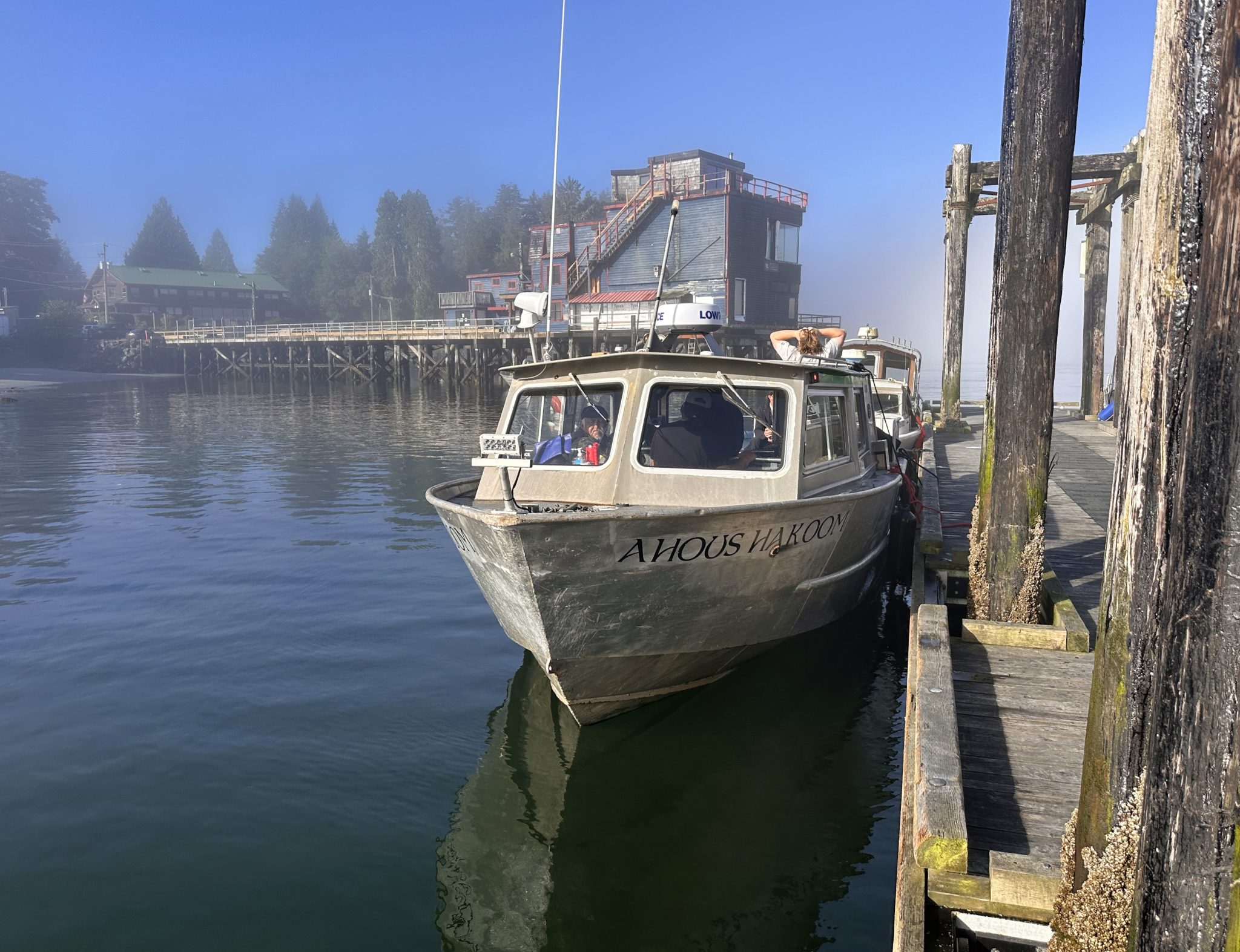
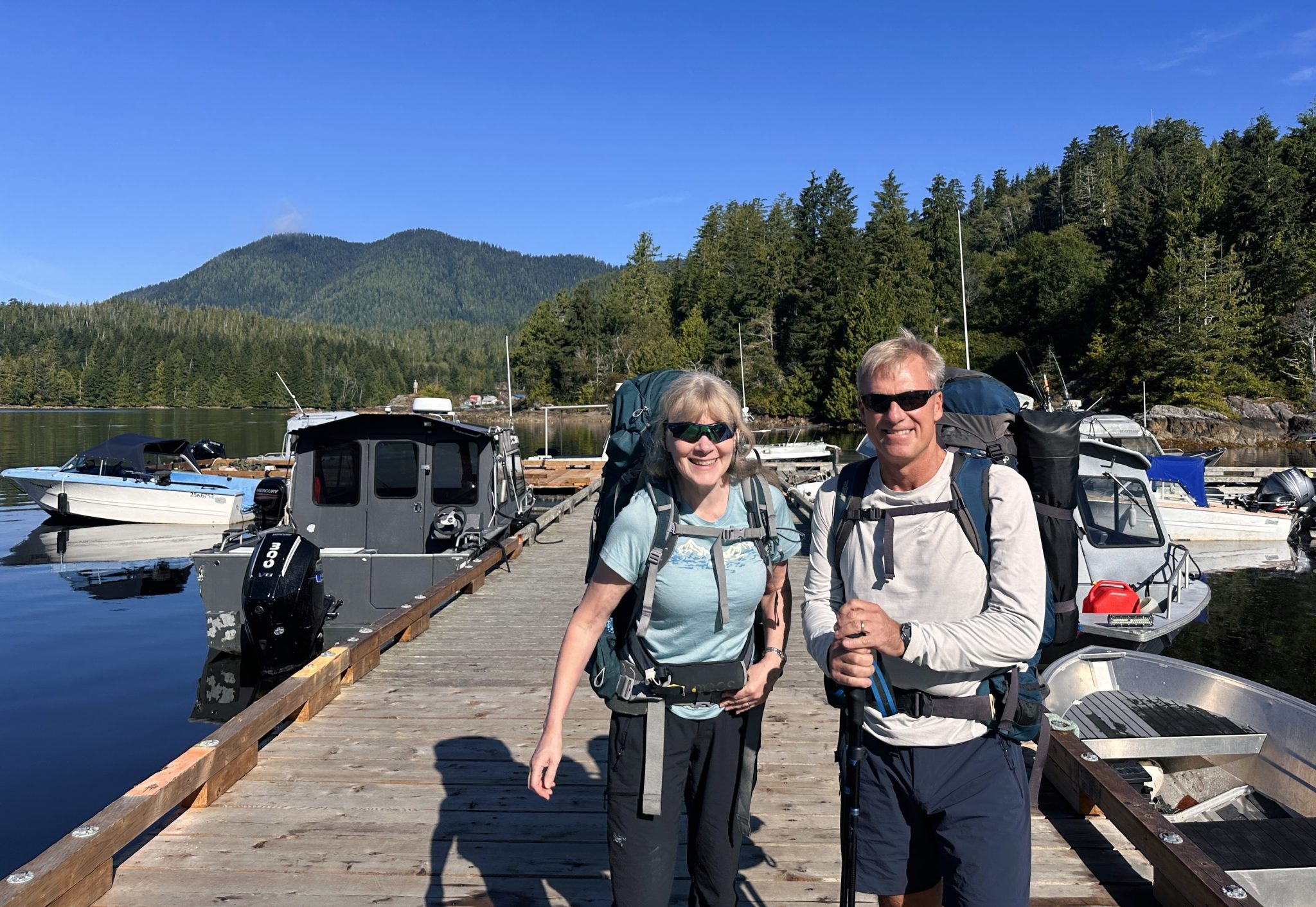
From Maddies Dock, it’s just over a kilometre stroll through the village, past a magnificent wood sculpture to the trailhead–still marked with the same “Walk The Wild Side” sign we remember. Everyone we met here was friendly and generous with advice about the trail. Remember that this is a First Nations community, not a tourist village. Be respectful, stay on main roads, and buy local if possible so some of your trip dollars stay in the community.
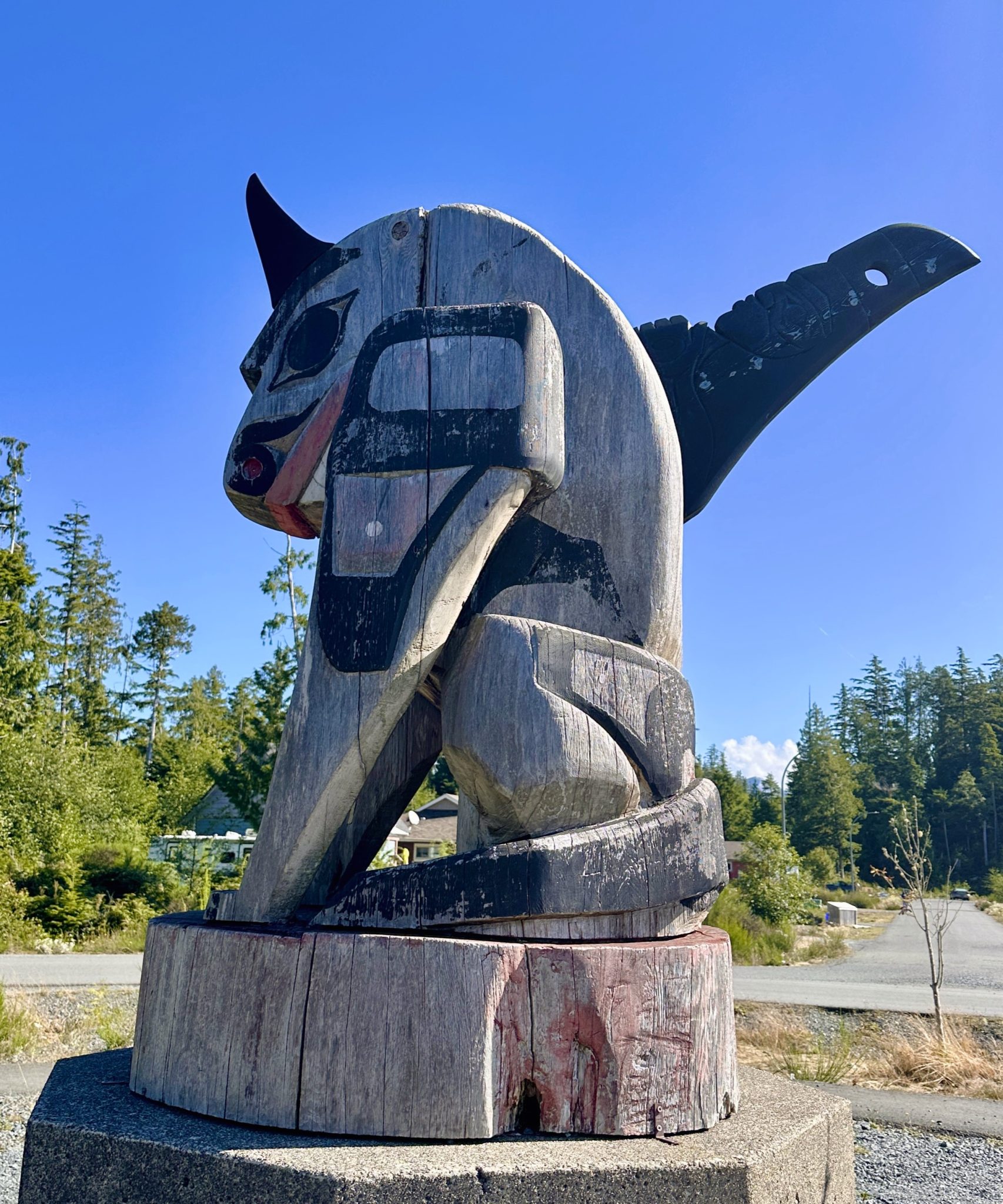
Before visiting Clayoquot Sound, check out the Wild Side Trail website and the Ahousaht Stewardship Fund website. The $15 per person per day ‘Ahousaht Stewardship Fee’ supports trail maintenance and local youth employment. Note that the fee is not specific to hiking the Wild Side Trail, but rather applicable to recreation in all parts of Ahousaht Territory–from Vargas Island up to Hot Springs Cove. The daily cost for our group of three was less than a night at a Tofino campground.

The Walk Itself
The trail runs 10 kilometres one-way from the trailhead to Cow Bay, alternating between easy beach walking and short, steep, forested headland crossings. The trail is generally in good condition, with much improved boardwalks since our 2011 visit, but still some rough patches. Trails can deteriorate rapidly in the damp climate, and ongoing maintenance by the Ahousaht is most welcome. Most beaches are marked at each end with plastic fishing buoys hung from trees. If you can’t see the buoy, poke around any gaps in the trees for a while and eventually you’ll find something.

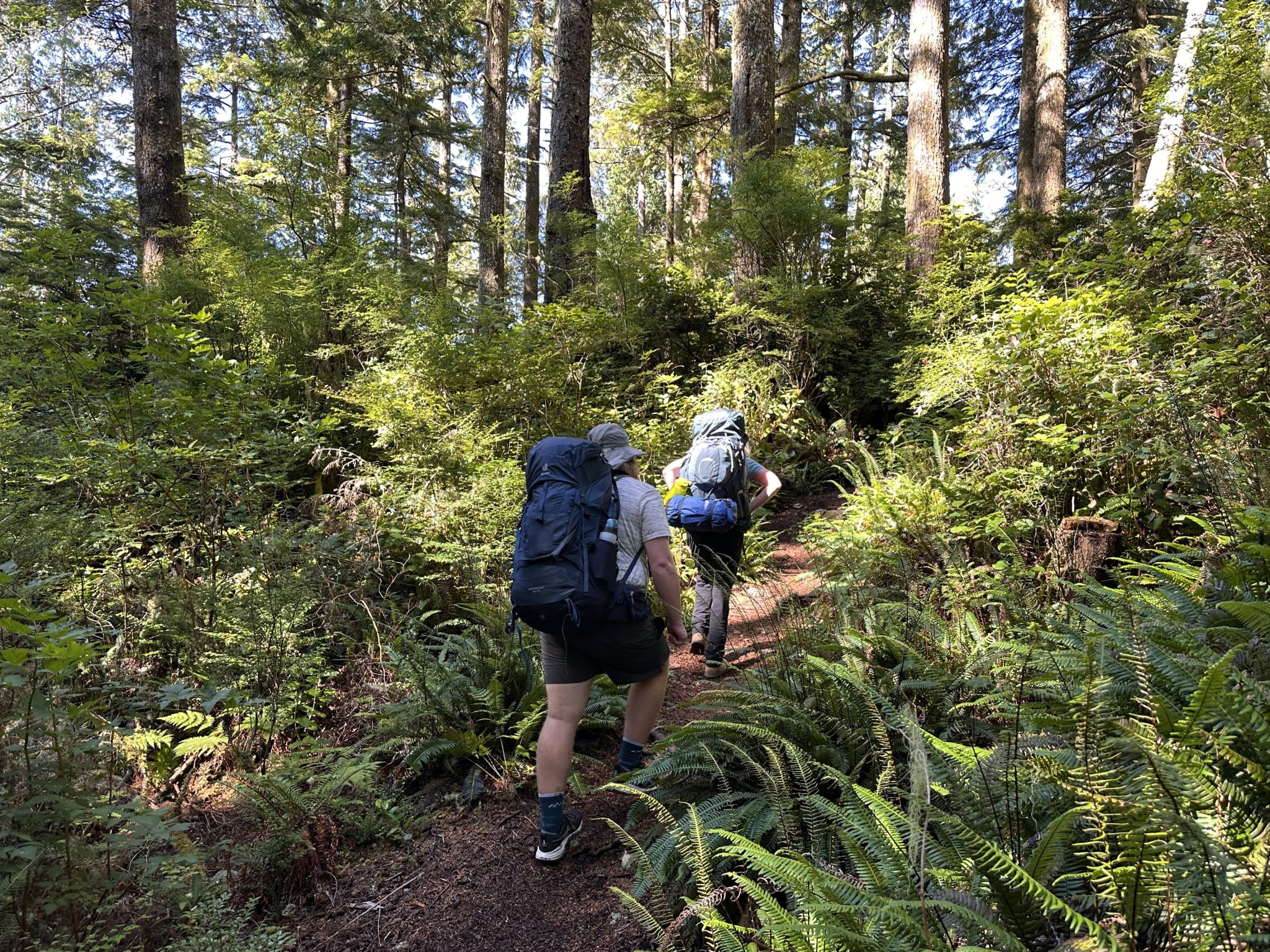

Plan your hike with tides in mind and aim for low tide if possible; the sand walking is much more pleasant than both the inland detour known as the “Trail of Tears” and the path along the east side of Cow Creek. Outbound to Cow Bay, we hit high tide at Kutcous Creek and had to cut inland to face roots, mud, and a few steep climbs–hard on our aging knees! For our return hike, we hit an early morning low tide and cruised back along a series of beaches lit up with bright morning sun–a glorious contrast. Most hikers take 4-5 hours each way; we were closer to five.
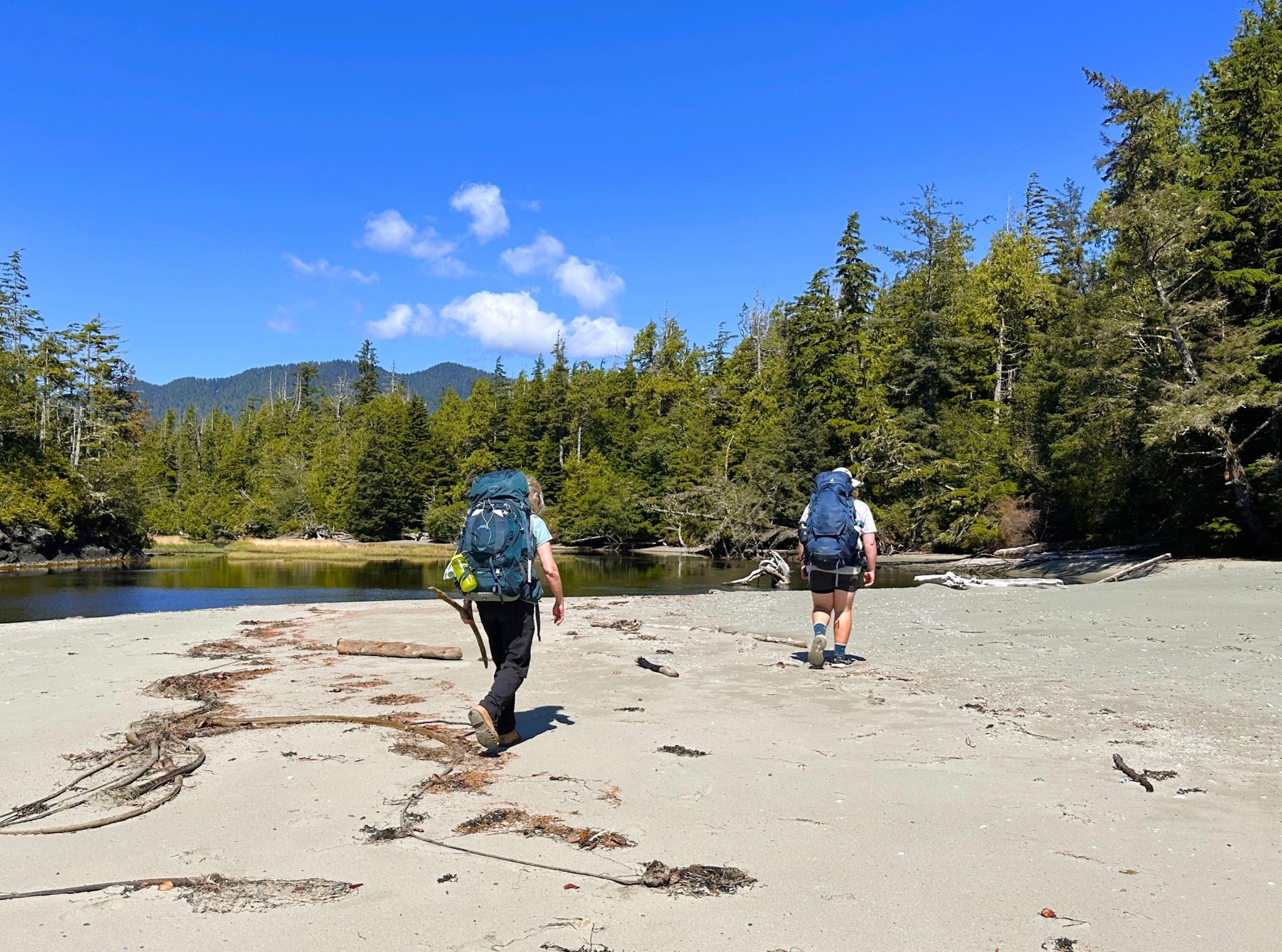

Cow Bay
Whether you hike or paddle in, Cow Bay is the crown jewel of the Wild Side and well worth the effort to reach. Our son spent hours every day reading in his hammock chair, enjoying the fresh sea breeze and watching grey whales feeding in the bay. He now calls it his favourite place on Earth: another generation smitten by Cow Bay.
There are three tent pads, two bearproof lockers, and two outhouses tucked into the forest. The broad, gently sloping beach offers plenty of room for hikers and kayakers to spread out. And of course, the west-facing sunsets defy description. There’s a fire ban in place most summers, so bring wine or tea and a windproof jacket to enjoy the golden sunset.

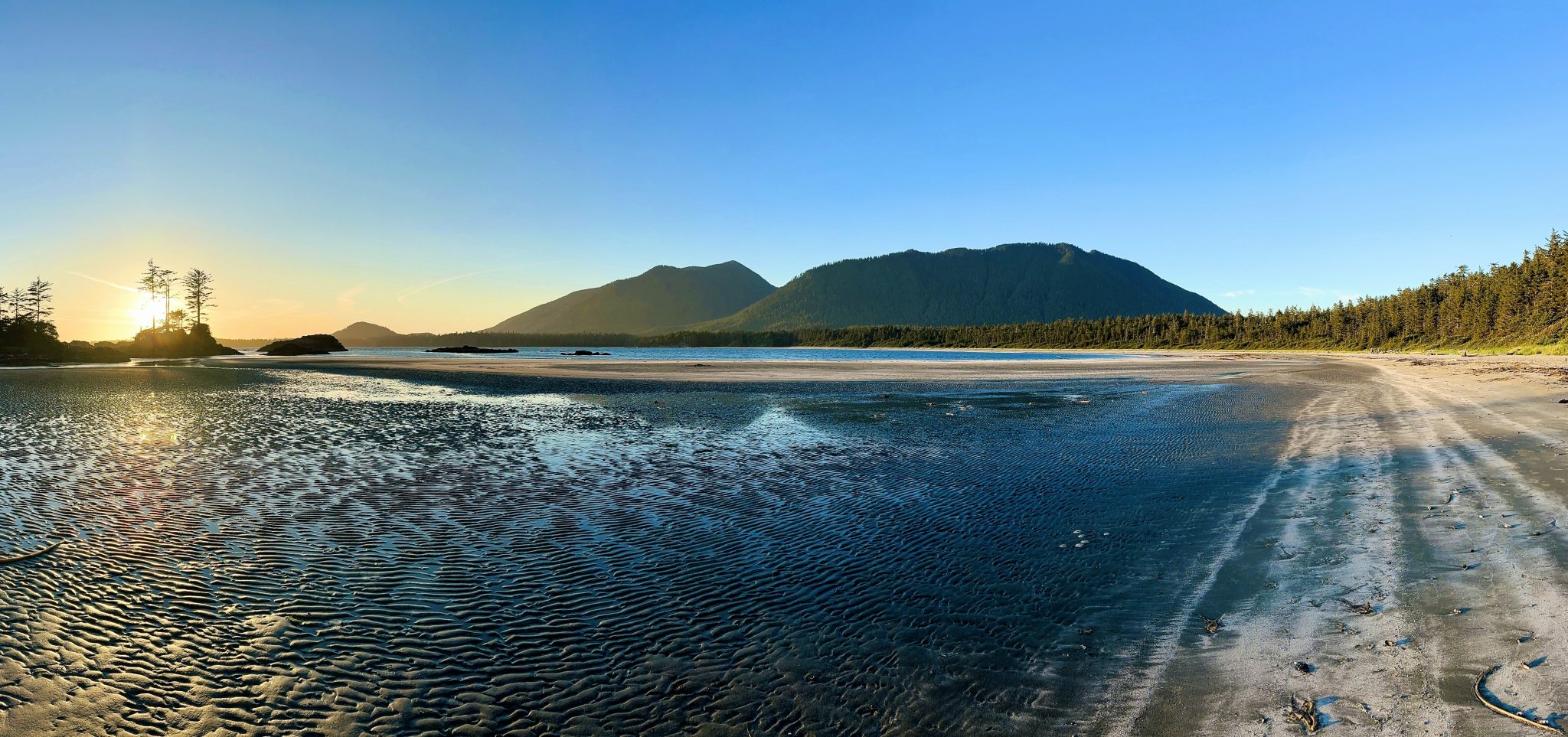
Fresh water from Cow Creek is only a few steps away. We treated the clear, tea-coloured creek water with Pristine A and B Water Purification Drops purchased at MEC as there was no need for filtration.
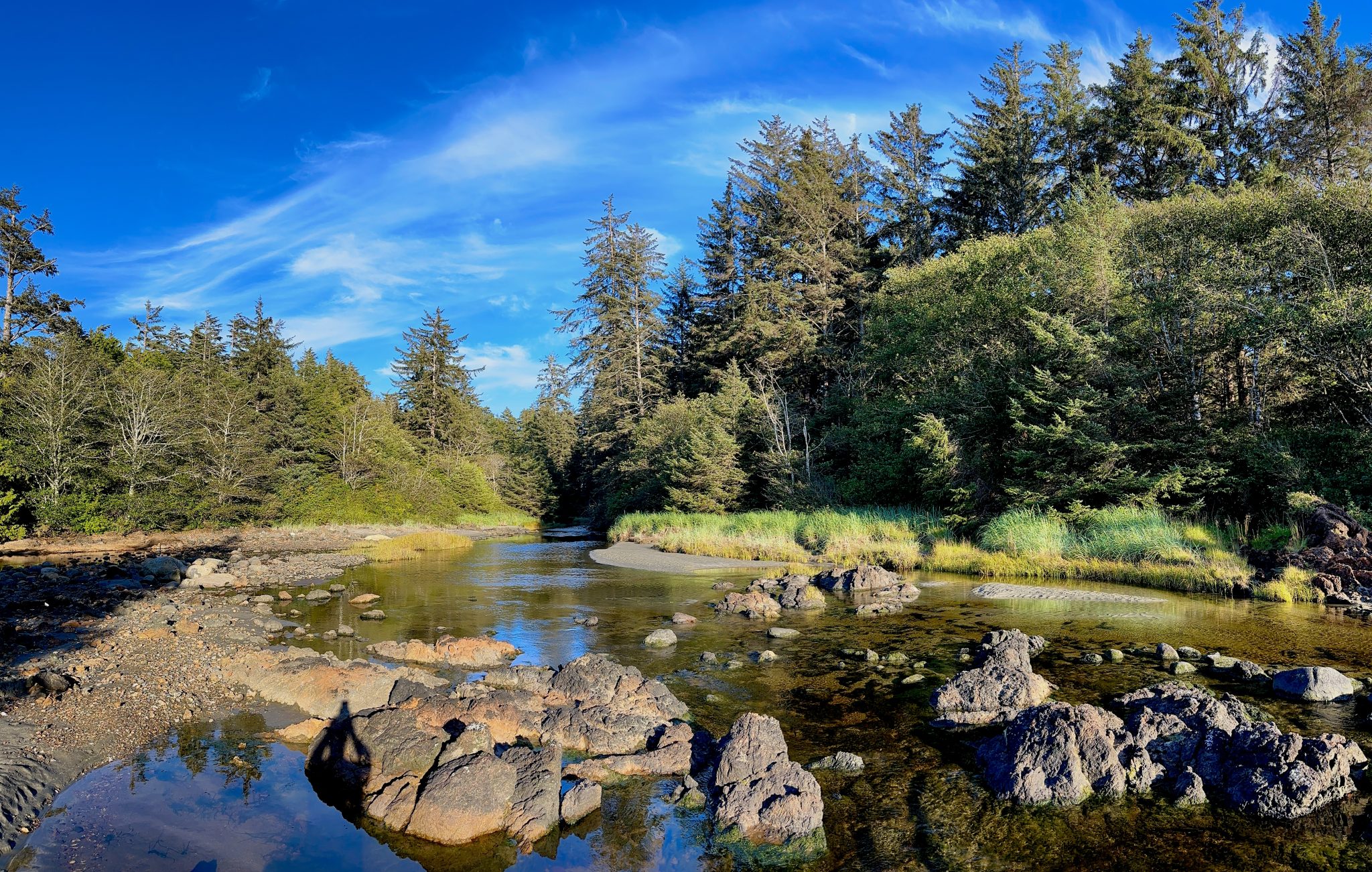
If you have the energy, wander farther northwest beyond Cow Bay. A string of unspoiled beaches continues for kilometres, each with a distinct wild personality. We initially couldn’t find a hanging trail marker at one of the trailheads, but after searching for a while in the trees, we found the tattered rope where the previously hung marker had broken off. To help future hikers find the trailhead, we replaced the fallen marker with a blue plastic water jug we found along the beach. For more beach-walking inspiration, check our article “Blissful Beaches: A Guide To BC’s Best 5-Star Beaches For Sea Kayakers.” We ranked the Wild Side beaches near the top.
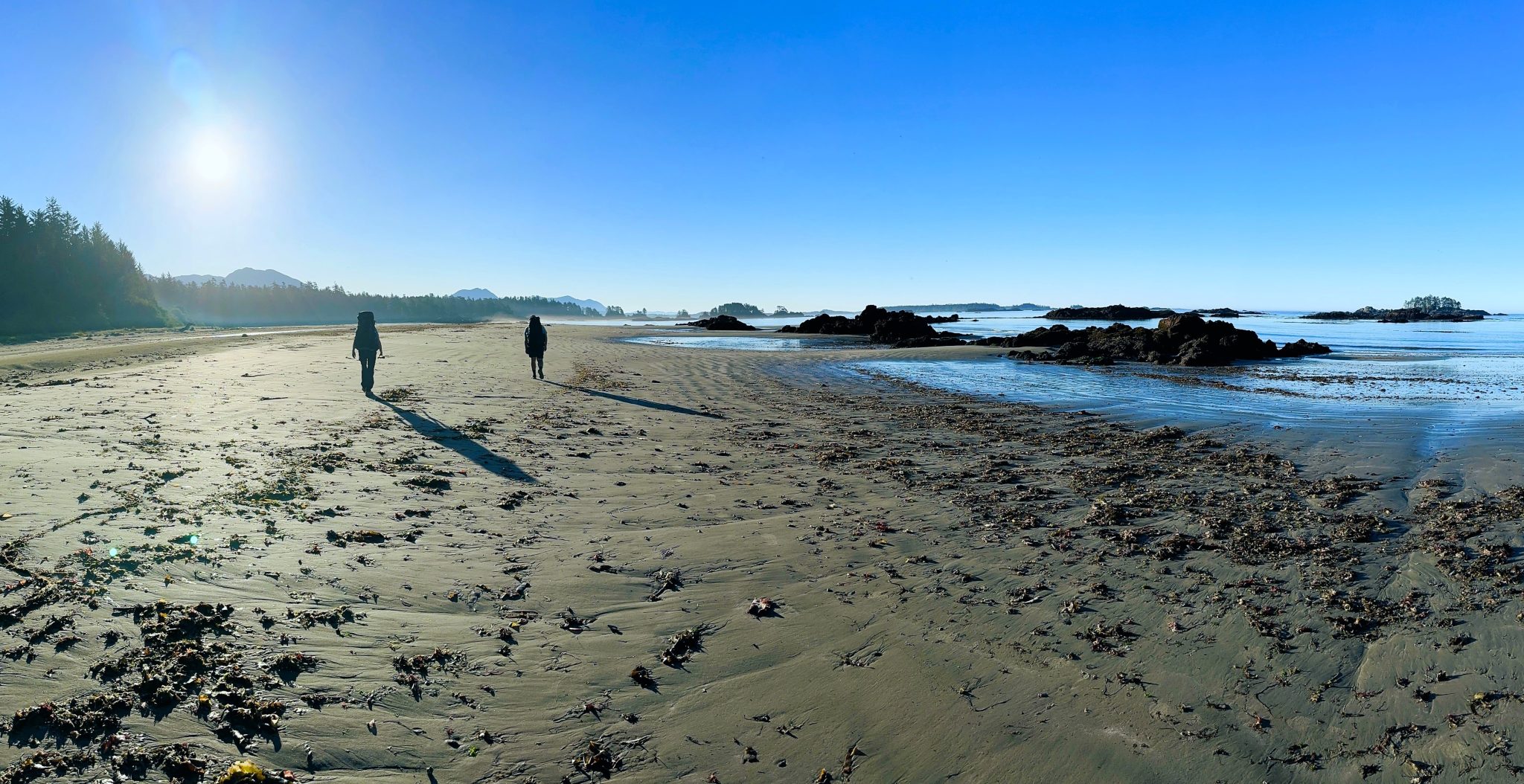
Getting There by Sea Kayak
Our kayak trips to the Wild Side usually start in Tofino, aiming either for Cow Bay or a small, scalloped beach east of it across the peninsula. Dispersed wilderness camping is permitted on the secondary site, which can be easier to reach in northwest winds vs. Cow Bay and has a warmer southern exposure, although no fresh water. The key to reaching either beach is timing. The paddle from Tofino crosses exposed water and afternoon northwest winds can turn a pleasant outing into a dangerous slog. Start early! Tides also matter–landing at low tide means a long carry up the beach to your campsite.
The paddle from Tofino to Cow Bay is 23-25 kilometres depending on whether you pass east or west of Vargas Island. We prefer the longer western route. Although more exposed to wind and surf, and you might lose sight of your paddling partners behind large swell, this route has richer wildlife viewing and fewer boats. Most importantly, the exposed route lets you drop in on Ahous Bay, one of the prettiest beaches on the West Coast. The eastern route is shorter and more sheltered, but often busy with small fishing boats–a hazard in the dense fog.
Before visiting Clayoquot Sound, please visit the Ahousaht Stewardship Fund website and pay the $15 per person per day stewardship fee. This fee is applicable to recreation in all parts of Ahousaht Territory, from Vargas Island up to Hot Springs Cove.
Route Options
Cow Bay makes a great out-and-back trip or a stop on a longer route. For a relaxed vibe, spend a night or two on Vargas then cross to Cow Bay for a few more, or try a circle route around Flores Island to Hot Springs Cove and back to Tofino. Paddlers can choose clockwise or counterclockwise depending on weather conditions and skill. Strong paddlers with a good weather window might manage the full circuit in four days, but most paddlers take a week to enjoy the stunning Wild Side beaches and to allow schedule flexibility.


BCMT’s public map shows launch sites, campgrounds, and Ahousaht visitation updates. Paid-up BCMT members also have access to a trip planning layer with a “ruler” tool that can be used to map out distances between stops and exact GPS coordinates. A popular 5-day loop looks like this: Tofino to Cow Bay 23-25 km, Cow Bay to Hot Springs Cove 18 km, Hot Springs Cove to Obstruction Island 21 km, Obstruction Island to Chetarpe or Dick and Jane Beach 21-25 km, Dick and Jane Beach to Tofino 13 km. We average 5 km/hr, but paddling speeds vary wildly depending on winds, currents, paddler skill, and how many photo stops you take to capture the stunning scenery along the way.
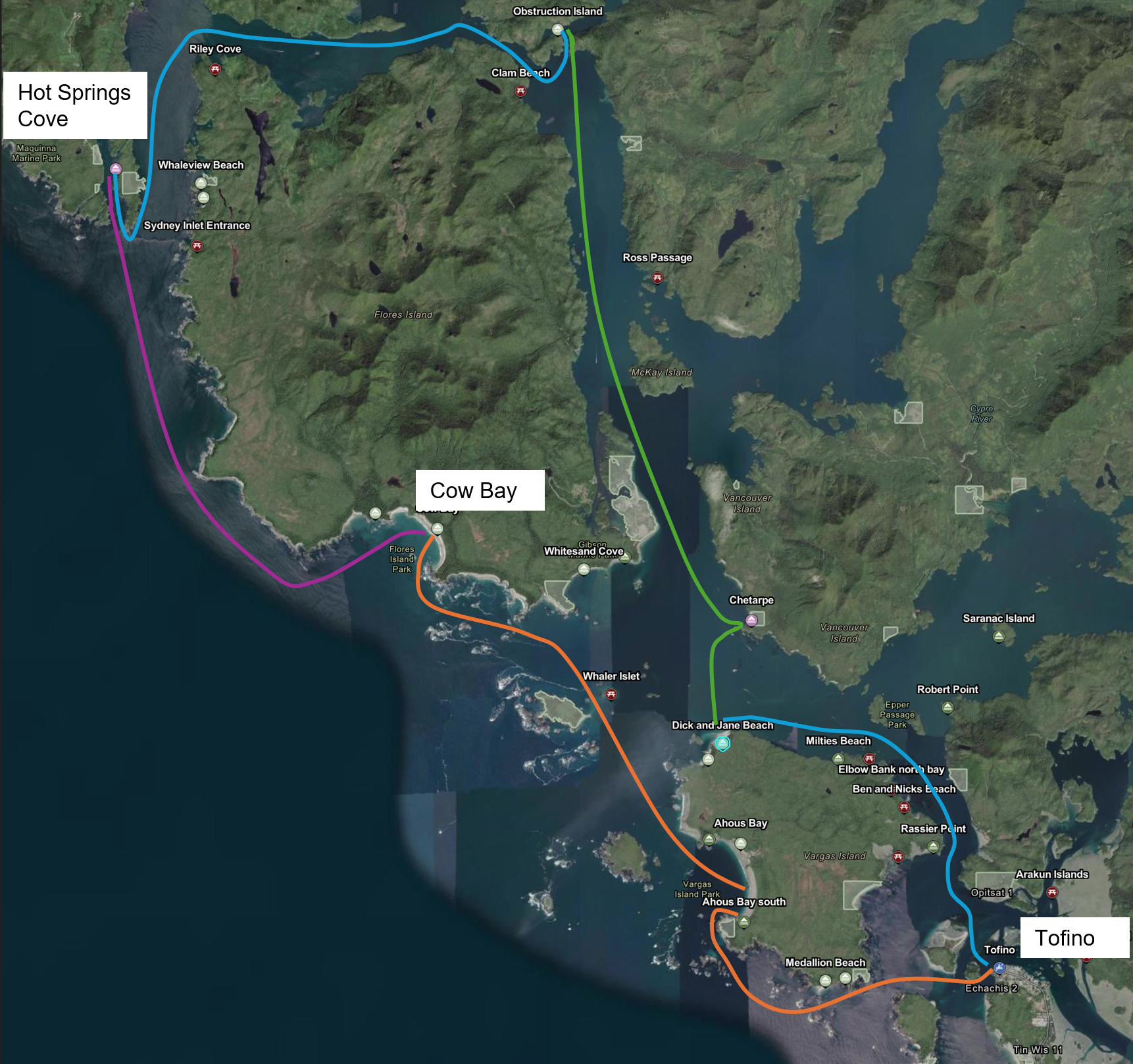
As with any trip along the west coast, be flexible in response to changing weather conditions. On our 600-km paddle from Bella Bella to Tofino, our “easy” final leg from Cow Bay to Tofino became one of the hardest days of the entire journey. To reach Tofino for a scheduled pick up, we paddled through heavy rain and 20-25 knot southeast headwinds that were stronger than forecast. As usual, we tried to make it around the west side of Vargas Island. With the seas too rough to make any progress past Ahous Bay, we had to double back and make our way around the east coast of Vargas. By the time we reached Tofino, Julee was soaked and shivering with mild hypothermia. The hot hotel shower afterward never felt so good!
Other Routes
Over the years, we’ve met some impressive adventurers on the Wild Side. This year’s harvest included hikers from Montana, Quebec, and Parksville all seeking the dream of a wild west coast beach. Standouts this year were fellow BCMT members, Adrienne and Josh. Both were squeezing in a late summer paddle before heading back to UVic—she working on a PhD in particle physics, and he a Master’s in bioengineering. They’d launched from Tofino at 8:30 a.m. and pulled into Cow Bay around 5 p.m., exhausted but grinning. Their plan was a four- or five-day loop between Tofino and Hot Springs Cove, taking advantage of a weather window that called for sunshine and light wind every day. We wished them luck and quietly remembered how much we enjoyed trips like this when we were younger. Now in our 60s and with Jerry having health issues, our pace has slowed. But oh, it’s good to see the next generation picking up the torch and running with it.
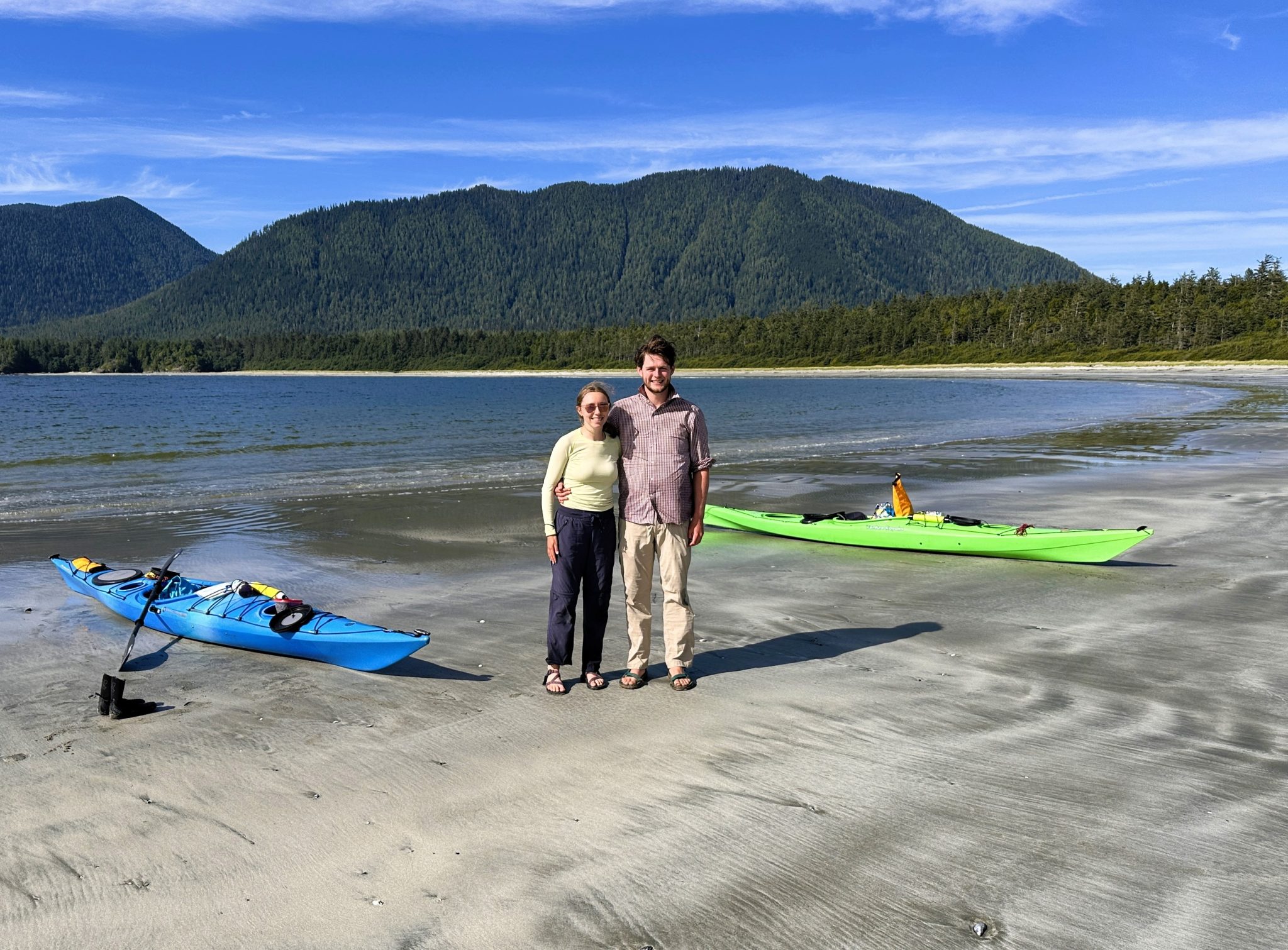
For paddlers apprehensive about tackling a trip like this solo–to avoid the hassle of sorting kayak rentals, campsites, meals and maps, for example, or to share laughs in the wild with less experienced friends–try a guided tour. Jerry’s first guided kayak tour, more than 40 years ago, gave him the confidence (and perhaps an inflated sense of competence) to plan his own trips ever since. For her 60th birthday, Julee organized a guided trip in Kyuquot Sound with a group of close friends, some of whom had barely ever paddled but all of whom loved the cute sea otters.
A good guide takes care of the navigation and safety, helps with the launches and landings, and–best of all–whips up gourmet camp meals while you sit back and watch the sunset. Paddle West Kayaking in Tofino (a BCMT member) offers a 5-Day Kayak & Hike Clayoquot Sound tour stopping at Vargas on Day 1; Cow Bay, Kutcous, or Whitesands on Day 2; hiking part of the Wild Side Trail on Day 3; returning to Vargas on Day 4; and paddling back to Tofino on Day 5. They also run a 5-Day Hot Springs Cove trip that ends with a water-taxi ride back to Tofino.
Future Hot Springs Marine Trail?
The Ahousaht First Nation, in collaboration with BCMT and Paddle West, has been working to develop a marine trail between Tofino and Hot Springs Cove on the east side of Flores Island. Infrastructure upgrades are required before the route can accommodate increased paddling traffic from a new trail, potentially including: tent pads, bear caches, composting toilets, hazardous tree removal, and new camp sites to shorten the safe distance between stops. These improvements take both time and funding. BCMT will share updates with our members as they become available.
Planning a Trip to the Wild Side
- Trail Map
- Weather: Expect fog, drizzle, or glory–sometimes all before lunch. Even in August (“Fogust” to the locals), pack for wet.
- Water: Cow Creek usually runs clear with a slight tea-colour from natural tannins; A&B water purification drops or boiling is sufficient for most paddlers.
- Bears & Wolves: Store all food carefully in bear lockers. Don’t let dogs from Maaqtusiis follow you on the Wild Side Trail, as this can create dangerous conflicts with local wolves.
- Connectivity: None. Enjoy it.
- Ahousaht Visitation Guidelines and Stewardship Fee: When visiting ʕaḥuusʔatḥ haḥuułii (Ahousaht territory), paddlers and other visitors are asked to help the Ahousaht Nation fulfill its ancestral responsibility to care for the lands and waters that sustain its people. To support this stewardship work, the Nation requests a $15 per person, per day fee for all recreation within their territory—whether you arrive by land or sea.
You can pay the fee online through the Ahousaht Stewardship page. Funds go directly to the Ahousaht Stewardship Guardian Program, which blends Ahousaht knowledge with western science to preserve, restore, and protect local ecosystems and cultural resources for future generations.
While you’re on the water, keep an eye out for the Ahousaht Guardians—you’ll spot them in their bright yellow Ahous Guardian boat as they patrol the territory. They’re also available to assist in emergencies on VHF Channel 68.
ƛecko (thank you) for supporting Ahousaht’s stewardship initiatives and helping ensure these lands and waters remain healthy and vibrant for generations to come. - Respect: Follow leave-no-trace principles from BCMT’s Code of Conduct. Stay only at designated campsites. Treat the land with respect. Disturb nothing, take nothing. Observe Ahousaht visitation guidelines and try to leave a small benefit behind–a store purchase, or even a friendly conversation counts.
- Water Taxis: Many water taxis run between Tofino, Maaqtusiis, and the pricier run to Hot Springs Cove, with some offering dry or wet drop offs (1, 2). On our return trip from Maaqtusiis to Tofino, our choice was to wait for a scheduled 3pm pick up by Ahous Hakuum or ask around at Maddies Dock when we finished our hike. When we arrived at the dock just before noon, several boats offered us a lift back to Tofino. Jerry, ever the style scout, picked the one captained by Skipper Charles, an Ahousaht fashionista rocking the latest in “Mariner Chic”: a wool English Flat Cap jauntily perched at just the right angle together with a friendly grin and easy laugh. His ensemble clearly said, “I may be a manly boat captain, but I also know my fabrics.” Fashionable Sea Kayakers notice these details.

Beyond Cow Bay
If the combination of hiking and paddling appeals, here are a few other west coast spots offering both access options:
- Cape Scott Park: A series of beaches along the north coast are reachable by the moderate and often muddy Cape Scott Trail or the much tougher North Coast Trail. We kayaked. One of our sons hiked the North Coast trail with two friends and found it very hard. The pretty beach at San Josef Bay involves a much shorter hike from a nearby trailhead.
- Raft Cove Provincial Park: Reached by kayak or a short hike from a nearby trailhead.
- Hesquiat Peninsula Trail: Most people reach this 50-km hike by catching a water taxi to Escalante Beach. We kayaked as part of our 600-km journey from Bella Bella to Tofino.
Marine Debris & Stewardship
Cow Bay’s south end hosts a marine debris drop zone. This and four similar sites on Vargas Island can all be viewed on the “Marine Debris” layer of the BCMT map. All five sites are part of BCMT’s Marine Debris Drop Zone Program collecting plastics to be picked up later by Western Canada Marine Response Corporation (“WCMRC”) in coordination with the Ahousaht and BC Parks. At Cow Bay, there was a big pile of plastic debris waiting at the collection site–a satisfying reminder that visitors really can make a difference. If you’re ever in the area, help out by adding any plastic waste you find to the pile and submitting photos through BCMT’s Site Condition Reporting system; it’s good karma.
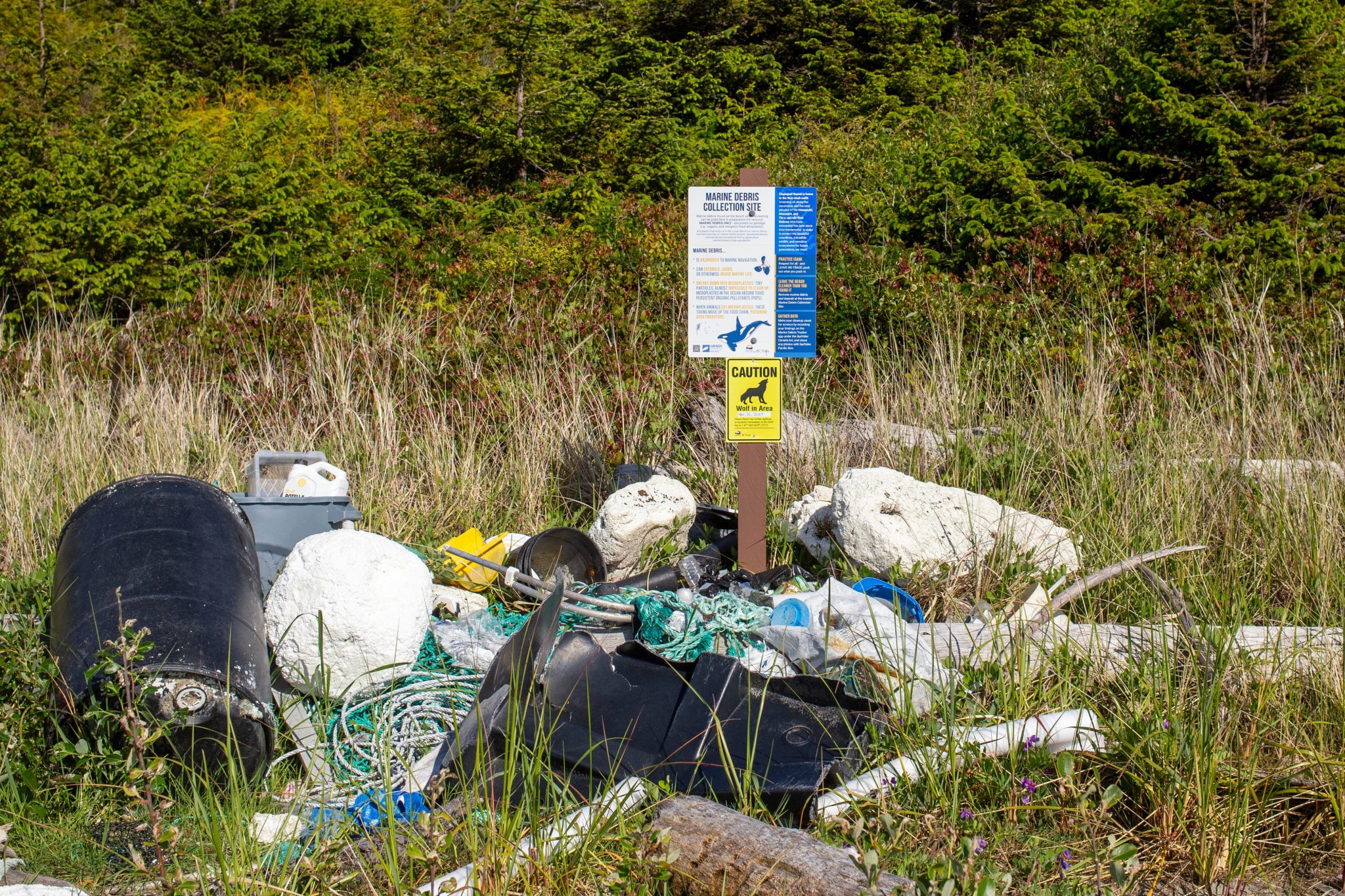
Since 2022, BC Marine Trails has partnered on an annual Vargas Island Cleanup with the Ahousaht First Nation, Surfrider Pacific Rim, BC Parks and WCMRC. BCMT volunteers circumnavigate the island by kayak over a five-day period, stopping to clean beaches along the way. Debris is later removed by WCMRC landing craft and recycled through Ocean Legacy’s Plastic Depot in Ucluelet (marine debris cleanup efforts across Clayoquot Sound). If you’d like to join future clean ups or help BCMT in other ways, volunteer here.
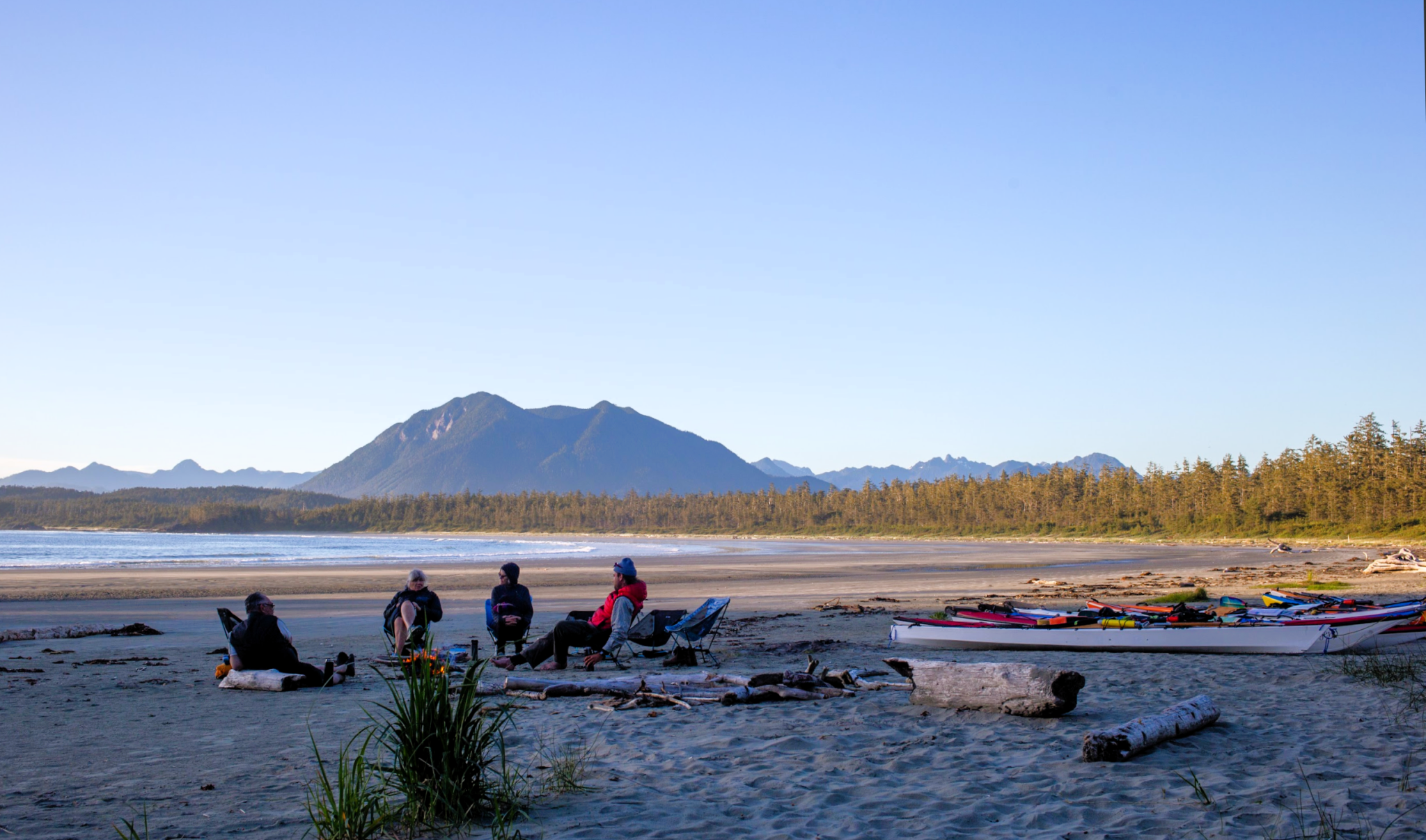
Flores Island by Land or by Sea Kayak--Which Wins?
One of the great pleasures of visiting the Wild Side is sitting just above the tide line, wine or tea mugs in hand, listening to the surf and watching the sandpipers dance at the edge of the foam. The light lingers at sunset with gold shading to rose, whales breathing in the bay, and maybe fog rolling in from the Pacific. It’s the kind of beauty that asks for awed silence more than adjectives or rankings.
We’ve found the Wild Side to be as much a state of mind as it is a place. Whether you hike or paddle there, you’ll earn the same reward: raw, west coast beauty and the profound sense that you’ve stepped off the edge of the ordinary world into something ancient, wise, and breathtakingly beautiful.
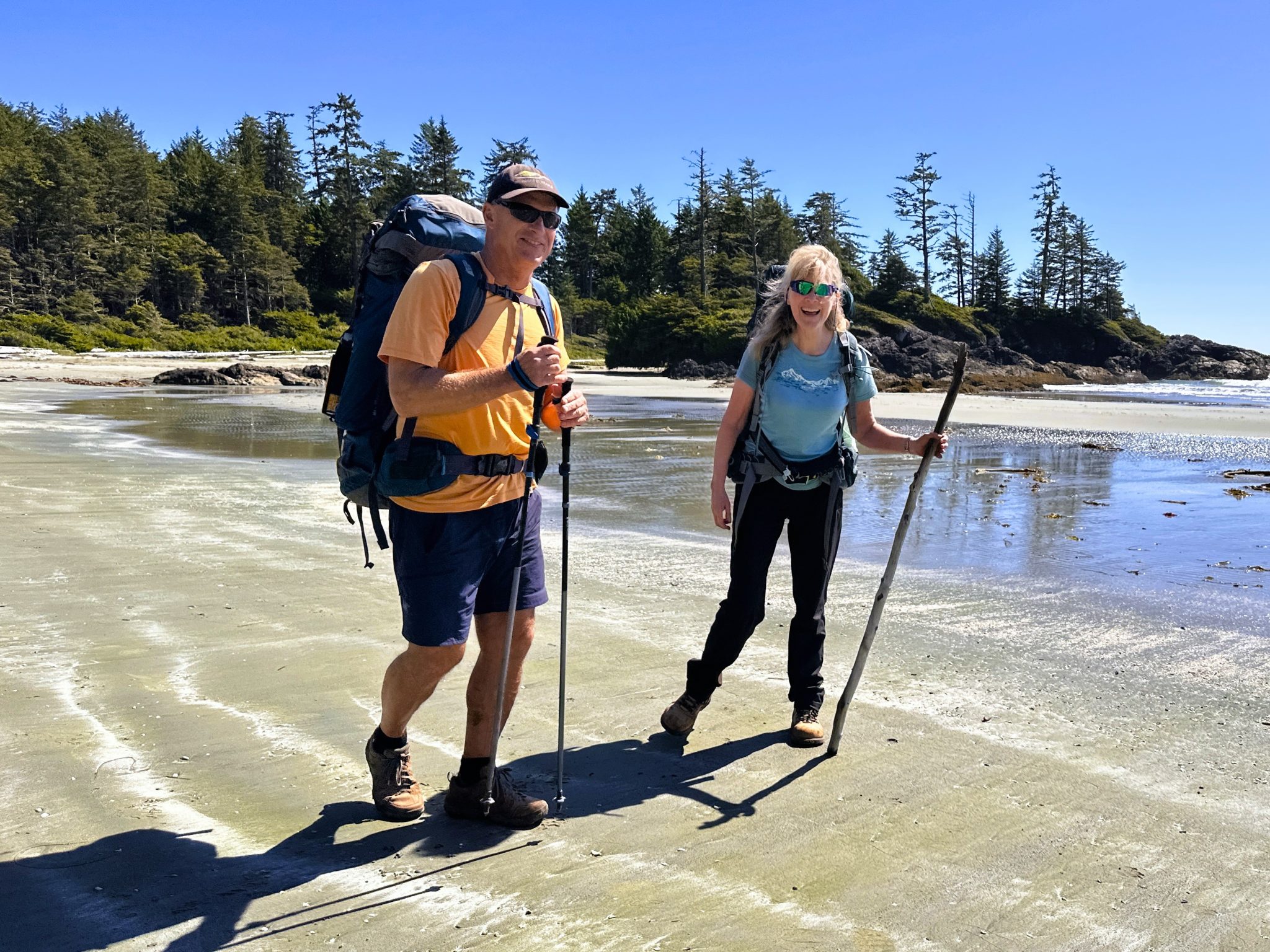
If your health–or the gear you can buy, borrow or rent–limits you to only one type of trip, your choice is easy. For a 3-4 day outing, hike the Wild Side Trail. For a weeklong trip, paddle the Wild Side of both Vargas and Flores. Strong paddlers can push on for a full Hot Springs Cove circuit, or a there-and-back paddle along the sheltered inside route that may one day be a marine trail.
Friends of ours recommend a one-way paddle between Tofino and Hot Springs Cove with a water taxi return–all the scenery of a two-way trip but half the sore muscles.
If, like us, your time on the Wild Side is just one chapter in a decades-long love affair with the BC coast, then do it all: hike it, paddle it, repeat it, and bring partners, kids, relatives, and friends. Every one of our visits to the Wild Side has felt fresh, fun, and absolutely worth it.
And should your water taxi be helmed by Skipper Charles in his wool English flat cap, please tell him the Fashionable Sea Kayakers say hello—and that his hat remains an inspiration to paddlers everywhere.


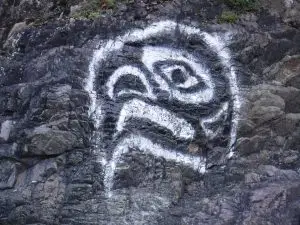
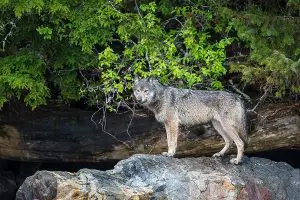
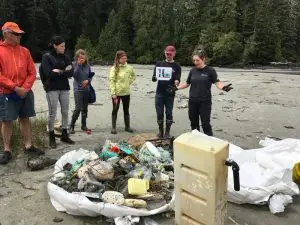
Excellent article on all that one would want to know to visit this area! The BCMT map is a great resource – and I like the first hand details you gave that make it real.